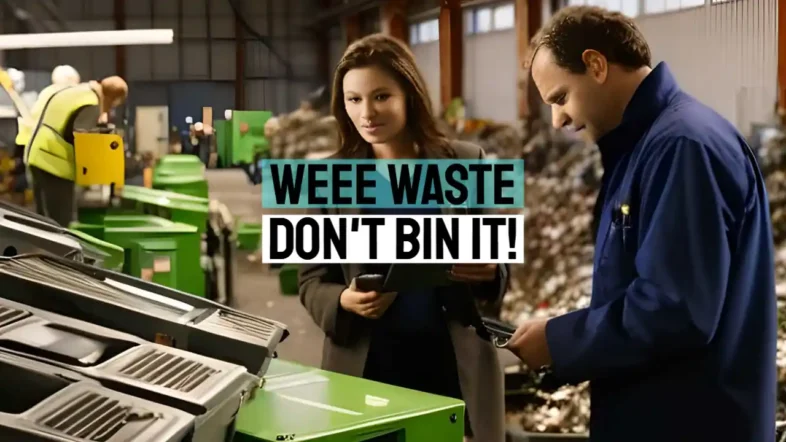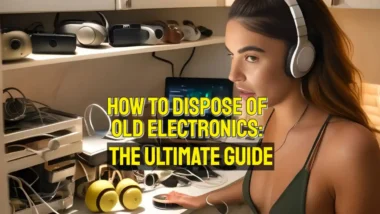Many people choose to throw away their WEEE waste electrical goods (e-waste), whether in the bin or as materials to be sent to a landfills around the country.
However, doing so contributes to a growing environmental problem that, if not dealt with, will lead to serious damage to the atmosphere. European Waste Electrical and Electronic Equipment (WEEE) regulations were imposed before 2010 to try to stop e-waste from appearing in landfills, while other schemes have worked to find better recycling options for goods.
With an astounding 74 million metric tons of electronic waste projected by 2030, understanding how to manage Waste Electrical and Electronic Equipment (WEEE) has never been more crucial. The choices we make today can significantly impact our environment and health.
What You Will Learn About WEEE Waste
- WEEE waste includes a wide range of discarded electronic devices, from smartphones to industrial machinery, necessitating proper disposal to prevent environmental harm.
- Rapid technological advancements and consumer demand contribute to the growing challenge of electronic waste management.
- Incorporating WEEE waste i into a circular economy promotes sustainability by encouraging reuse, repair, and recycling of electronic products.
- Responsible disposal of WEEE is essential to prevent toxic substances from entering ecosystems and to protect human health.
- Landfill diversion minimizes waste, reduces greenhouse gas emissions, and recovers valuable materials for reuse.
- Taking action through education and community involvement can significantly enhance WEEE waste management efforts.
- Participation in local recycling initiatives fosters collaboration and helps improve resource recovery from WEEE electronic waste.
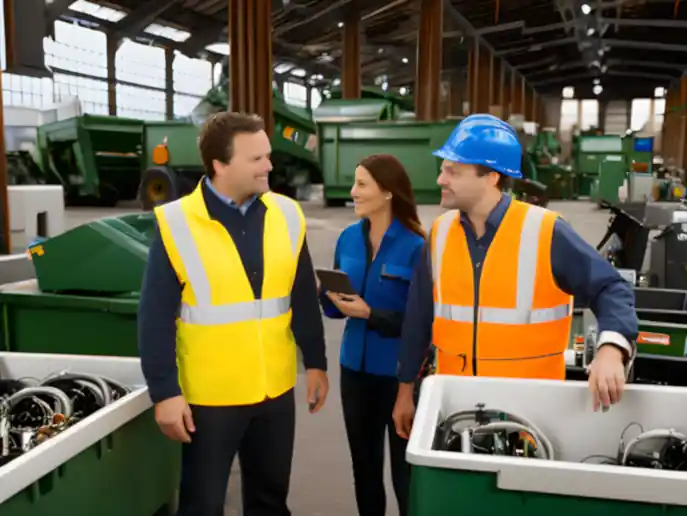
Understanding WEEE Waste: A Comprehensive Overview
Waste Electrical and Electronic Equipment, commonly known as WEEE, refers to discarded electrical and electronic devices. This category includes a vast range of products, from household appliances like toasters and TVs to larger equipment such as computers and industrial machinery. Understanding WEEE waste i is crucial because it encompasses materials that can be hazardous and that require proper disposal and recycling methods.
The significance of WEEE has grown tremendously with our increasing reliance on technology. Every year, millions of tons of electronics are discarded, leading to significant environmental concerns. Therefore, addressing the issue of WEEE waste is not just about managing waste; it's about protecting our planet and health.
Defining WEEE: What is Waste Electrical and Electronic Equipment?
WEEE is defined as any electrical or electronic equipment that has reached its end of life. This includes everything from smartphones and batteries to larger appliances like refrigerators. Since many of these devices contain toxic substances, proper disposal is essential to prevent pollution and health risks.
Examples of commonly recognized WEEE waste include:
- Computers and laptops
- Smartphones and tablets
- Home appliances such as microwaves and washing machines
- Televisions and monitors
By understanding what constitutes WEEE waste, we can take proactive steps to manage and dispose of these items responsibly. This awareness is the first step toward effective recycling and minimizing environmental damage.
The Growing Challenge of E-Waste in Today’s World
The challenge of managing electronic waste is escalating due to rapid technological advancements and shorter product life cycles. Each year, the amount of e-waste generated is increasing significantly, causing alarm among environmentalists and waste management authorities. In fact, it is estimated that global e-waste will reach a staggering 74 million metric tons by 2030!
Key factors contributing to this growing challenge include:
- Rapid technological innovation
- Consumer demand for the latest gadgets
- Lack of awareness regarding proper disposal
These factors lead to more electronic items being tossed aside, often ending up in landfills where they can leach toxic substances into the soil and water. It's a cycle that must be broken through education and improved recycling practices.

The Role of E-Waste in the Circular Economy
The concept of a circular economy is essential when discussing e-waste. This approach encourages the reuse, repair, and recycling of products to extend their lifecycle and reduce waste. By integrating WEEE waste into this model, we can minimize the need for new raw materials, conserve energy, and reduce greenhouse gas emissions.
The circular economy benefits include:
- Reduced environmental impact
- Conservation of precious resources
- Economic opportunities through recycling initiatives
Incorporating WEEE waste into the circular economy not only protects the environment but also promotes sustainability and responsible consumption. It's a win-win for our planet and future generations!
Key Legislative Frameworks Surrounding WEEE Waste
Numerous regulations and legislative frameworks guide the management of WEEE waste, aimed at reducing its environmental impact. Understanding these regulations helps both individuals and businesses comply and contribute positively to waste management efforts. With the right knowledge, we can all play a part in responsible e-waste disposal.
Key legislation includes the EU WEEE Directive, which has set standards for the collection, recycling, and recovery of e-waste since 2003. This directive has evolved over the years to address growing e-waste concerns effectively.
Summarizing the Impact of WEEE Waste on the Environment and Health
WEEE, or Waste Electrical and Electronic Equipment, poses significant challenges to both our environment and our health. When disposed of improperly, electronic waste can release hazardous materials such as heavy metals and toxic chemicals into the soil and water systems. This contamination can lead to serious health issues for humans and wildlife, making responsible disposal essential!
Understanding the impact of WEEE waste is crucial in highlighting the need for proactive measures. By focusing on proper recycling and disposal methods, we can mitigate the risks associated with electronic waste. It’s not just about getting rid of old gadgets; it’s about protecting our planet and ourselves!
Reinforcing the Importance of Responsible WEEE Disposal
Responsible disposal of WEEE waste is vital for safeguarding our health and the environment. It helps prevent the release of harmful substances into the ecosystem. Here are some key reasons why responsible disposal is important:
- Prevents toxic elements from polluting the environment
- Reduces the risk of health hazards associated with hazardous materials
- Conserves valuable resources by promoting recycling
- Supports sustainable waste management practices
By adhering to responsible disposal practices, we can greatly reduce the negative impacts of WEEE waste. This involves choosing certified recycling facilities that follow best practices for handling electronic waste!
Landfill Diversion and Its Benefits to Sustainability
Diversion of WEEE waste from landfills is an essential step toward a more sustainable future. When we recycle electronic waste instead of throwing it away, we can reap numerous benefits:
- Reduces the volume of waste sent to landfills
- Minimizes greenhouse gas emissions associated with waste decomposition
- Recovers valuable materials that can be reused in new products
- Encourages responsible consumption habits among consumers
By prioritizing landfill diversion, we not only help our environment but also contribute to a circular economy. This leads to a more sustainable approach to resource use and waste management!
Taking Action: Next Steps for Effective WEEE Management
Now that we understand the impact of WEEE, it’s time to take action! Effective management can make a huge difference in reducing the negative effects of electronic waste. Here are some steps you can take:
- Educate yourself and others about WEEE waste recycling
- Participate in local e-waste collection events
- Support businesses that prioritize sustainable practices
- Advocate for better recycling programs in your community
Every small step counts in promoting responsible WEEE waste management. Together, we can make a positive impact on our environment!
How to Get Involved in WEEE Recycling Initiatives
Getting involved in WEEE waste recycling initiatives is easier than you think! Here are some effective ways to participate:
- Join local community recycling programs
- Volunteer at e-waste collection drives
- Spread awareness through social media campaigns
- Educate friends and family about responsible disposal
By engaging in these activities, you become a part of the solution, helping to create a cleaner and healthier environment!
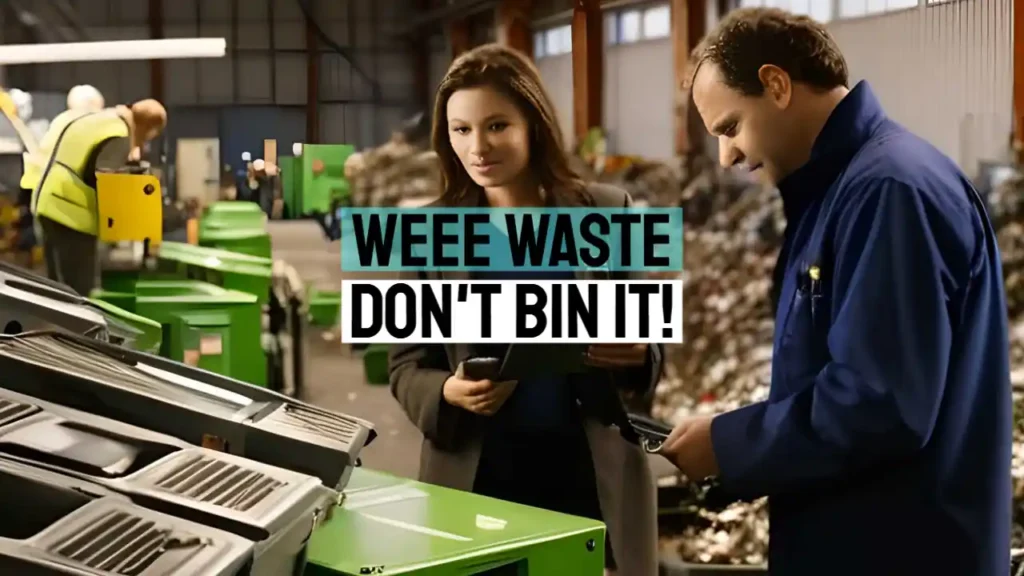
Contact Us for WEEE Collection Services and Compliance Support
If you are looking for WEEE waste collection services or compliance support, don't hesitate to reach out! Many organizations are dedicated to making recycling easier for individuals and businesses. Here are some options to consider:
- Local waste management agencies
- Private recycling companies
- Community outreach programs
Getting in touch with these services can help ensure your WEEE waste is disposed of correctly and in compliance with regulations.
Exploring Community Recycling Initiatives for Better Resource Recovery
Communities often have numerous initiatives aimed at improving resource recovery from WEEE waste. Participating in these programs not only helps the environment but also fosters a spirit of collaboration. Here are some community initiatives to look for:
- Regular e-waste collection days
- Workshops on how to recycle electronics
- Partnerships with local businesses to promote recycling
By becoming involved in local recycling efforts, you’re making a significant contribution to reducing the impact of e-waste in your area!
Frequently Asked Questions (FAQs)
1. What is WEEE?
WEEE (commonly called “WEEE waste”)stands for Waste Electrical and Electronic Equipment, which refers to discarded electrical and electronic devices. This includes a wide range of products that require proper disposal and recycling methods.
2. Why is proper WEEE disposal important?
Proper disposal of WEEE waste is vital to prevent hazardous materials from contaminating the environment and posing health risks to humans and wildlife.
3. What are the benefits of recycling e-waste?
Recycling e-waste helps reduce landfill waste, conserves valuable resources, and minimizes greenhouse gas emissions, contributing to a more sustainable environment.
4. How can I participate in WEEE waste recycling initiatives?
You can participate by joining local community recycling programs, volunteering at collection drives, and spreading awareness about responsible disposal practices.
5. What role does legislation play in WEEE management?
Legislation, such as the EU WEEE Directive, sets standards for the collection, recycling, and recovery of e-waste, helping to reduce its environmental impact.
Global E-Waste Projections
2020: 53.6 Mt2025: 64.5 Mt2030: 74 MtE-WasteE-WasteE-WasteYear202020252030
Contributing Factors to E-Waste Growth
- Rapid Technological Innovation
- Consumer Demand for Latest Gadgets
- Lack of Awareness Regarding Proper Disposal
Achieve of the original September 2012 post:
WEEE Waste – Why Not to Send Old Electrical Goods to Landfill
WEEE Waste Regulations Update:
It is now illegal to throw e-waste (WEEE Waste) into general rubbish bins in Britain and many other countries. Always check your local waste regulations before disposing of WEEE waste.
See also our article that answers the equation: “Can I put small electrical items in the recycle bin.”
E waste can be understood as being old televisions, radios, stereo equipment, computers, mobile phones, tablets, and batteries. These items contain potentially toxic materials like gold and cadmium, as well as non-degradable plastics. Around 5 to 10 per cent of worldwide waste (and rapidly rising) is now e-waste, and with more people buying or replacing phones and electrical components, the cost of throwing these items away is increasing by the year.
1 – e-waste – Where It Goes
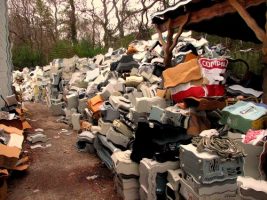
Most e-waste goes to landfill sites, and represented about 4.6 million tonnes a year in the US about 15 years ago (in 2024), with figures expected to be about twice that much now. In Hong Kong, 10 to 20 per cent of waste is e-waste. Some items are incinerated, releasing poisonous fumes into the atmosphere, while others are left to decay in the earth, with metals leaking into the soil. In this way, while 2 per cent of American landfills contain e-waste, these goods account for about 70 per cent of their toxicity levels.
2 – WEEE Waste Toxicity
Most e-waste (WEEE waste) goods will include harmful materials like lead and mercury, which can pass into the soil and then groundwater, leading to animal deaths an the gradual poisoning of the atmosphere. Bromides released when goods are incinerated can also lead to lung problems for workers, while old cathode tubes from televisions can release poisonous gases into the atmosphere. Some electrical goods also contain radiation traces, which is a particular problem for smoke alarms. Others release CO2 into the atmosphere, while persistent waste disposal means that more money is being spent on mining natural resources to extract further rare metals, upsetting delicate ecosystems.
3 – Alternatives
What, then, are the alternatives? How is it best to dispose of old electronic devices. The most obvious is to recycle more, with the WEEE Waste Directives emphasising the importance of schemes to tackle waste. Most phones and tablets can be exchanged for cash, with the re-seller choosing to either strip phones for parts, or sell them secondhand to new buyers. Donations of working electrical goods to developing countries can also help to prevent environmental damage.
There are a number of programs in place that aim to encourage the recycling or redistribution of old electrical equipment, from GreenerGadgets to Take Back My TV. Phone and tablet manufacturers are similarly willing to exchange old products or new, and are increasingly being pushed to make this standard as part of WEEE waste and other regulations. Community led, take back schemes also encourage people to donate their old electrical goods to local schools and community centres, rather than simply throwing them away.
Guest Poster: Rob James is a technophile working in conjunction with www.rpcrecycle.com. RPC recycle mobile phones in the UK. Rob can be found blogging about the latest in mobiles, tablets, PC's, and app's.


